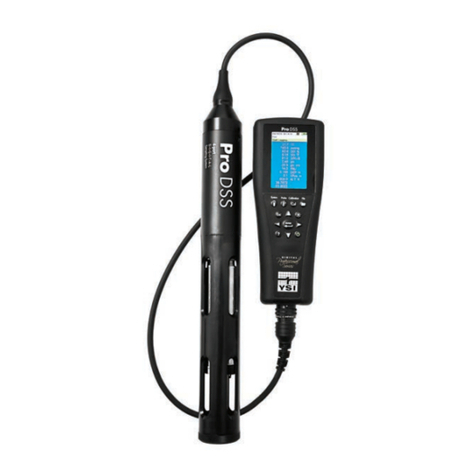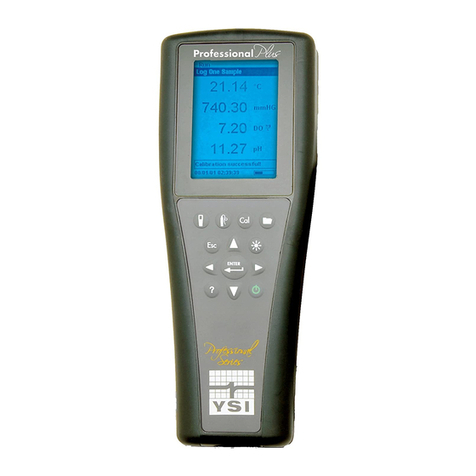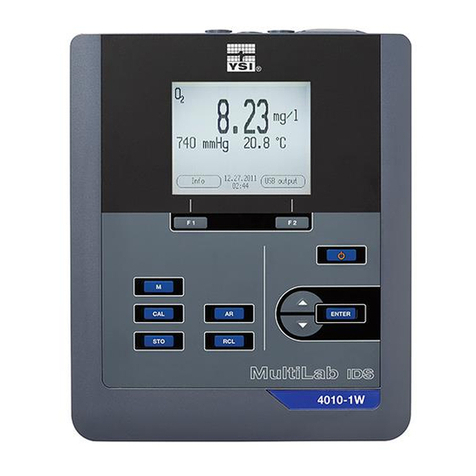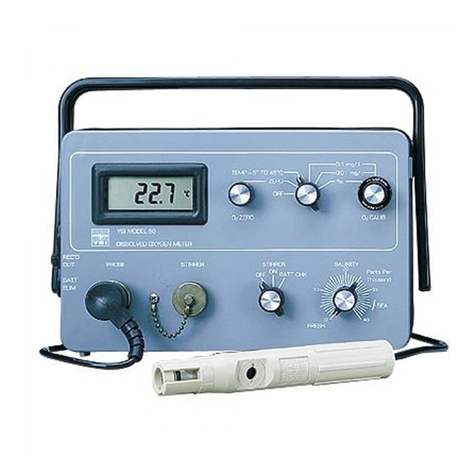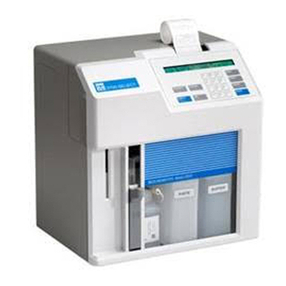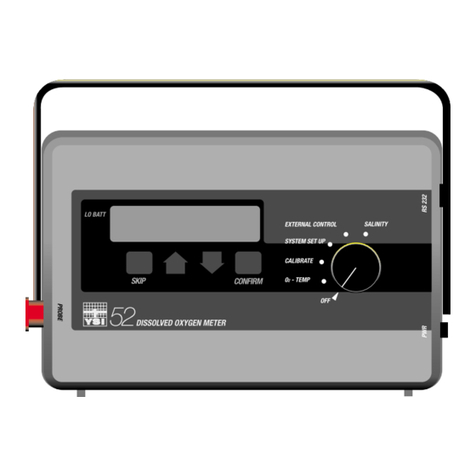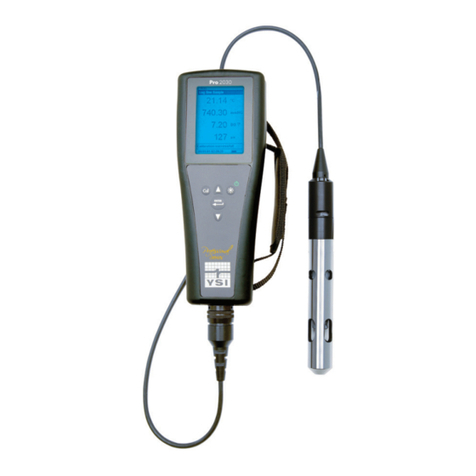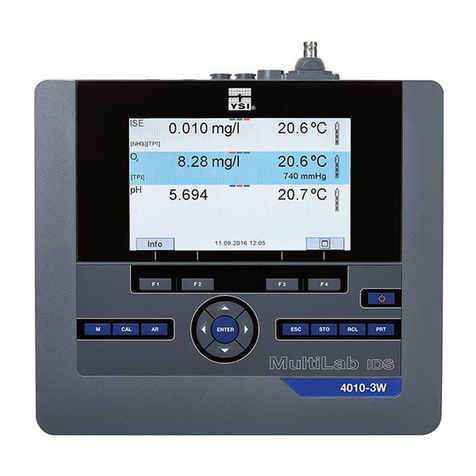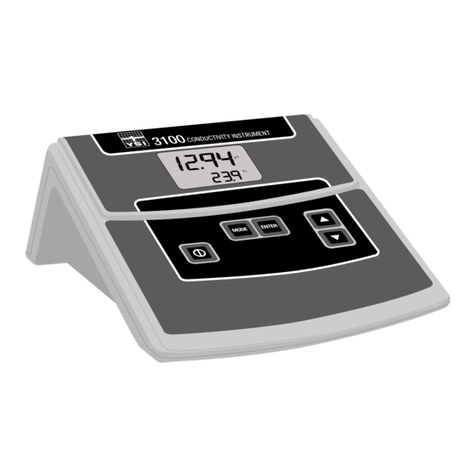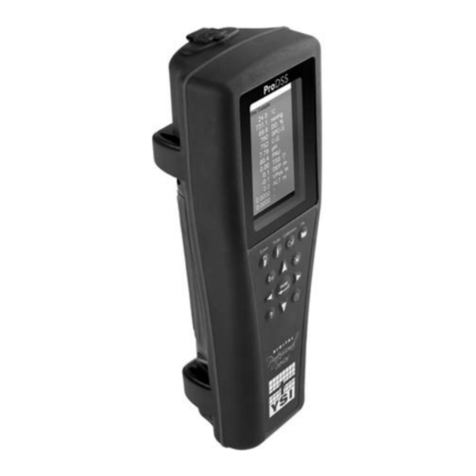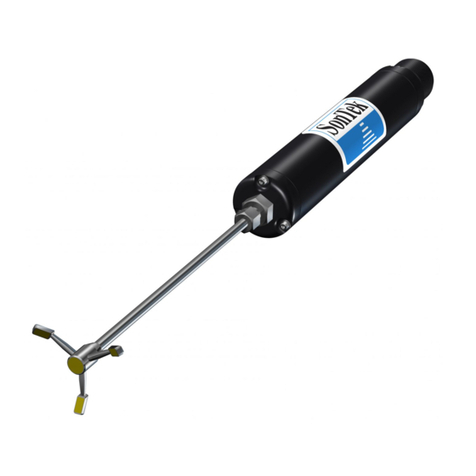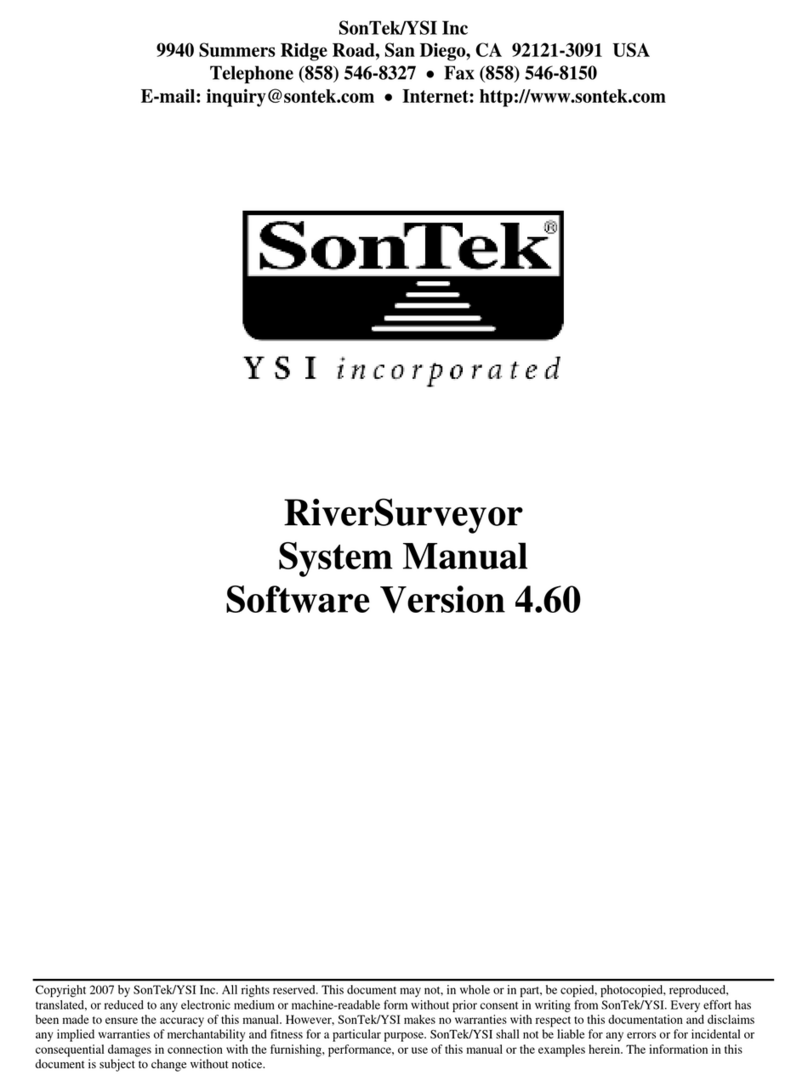
Clean and recondition the sensor if a slow response in the field has been reported or if it takes more than 90
seconds to stabilize in pH buffer.
If you get an error message during a pH calibration, check the following:
1. Ensure the pH buffers are good and not expired
2. Ensure that the pH sensor is installed in the correct port of the cable and the correct ISE is enabled in the
Sensor Setup menu.
a. If using a pH or pH/ORP combo sensor in a 6051020 cable, ensure the sensor is installed in port 1.
b. If using a pH or pH/ORP combo sensor in a 60510, 6051020 or 6051030 cable, pH should be
enabled in ISE1 of the instrument’s Sensor Setup menu.
c. If using a pH sensor in a 6051010 or Quatro cable, check to see if the pH sensor is installed in port 1
or port 2. If the pH sensor is installed in port 1, enable pH in ISE1 of the Sensor Setup menu. If the
pH sensor is installed in port 2, enable pH in ISE2 of the Sensor Setup menu. Note: It is not
recommended to use a pH/ORP combo sensor in 6051010 or Quatro cables. If using a pH/ORP
combo sensor in a 6051010 or Quatro cable, ORP will not be measured or reported.
3. If using a 6051010 or Quatro cable, you must have a sensor installed in port 1 for port 2 to operate.
Additionally, ensure that the sensor installed in port 1 is in good working order. In 6051010 and Quatro
cables, the sensors installed in port 1 and port 2 use the reference from the sensor installed in port 1 only.
Therefore, if the sensor installed in port 1 is not working properly, the readings from the sensor installed in
port 2 will be erroneous. For greatest ease, install a pH sensor in port 1 of both 6051010 and Quatro cables
and your other ISE sensor in port 2.
4. If you continue to get error messages during calibration, clean and recondition the sensor.
Cleaning and Reconditioning the pH, ORP or pH/ORP Sensor
If the pH or pH/ORP sensor has been allowed to dry out or has been stored in distilled or deionized water for an
extended period of time, soak the sensor in buffer 4 overnight to try and restore functionality.
Cleaning is required whenever deposits or contaminants appear on the glass and/or platinum surfaces or when
the sensor’s response slows. The cleaning can be chemical and/or mechanical.
Removing the sensor from the cable may make cleaning easier. Initially, moisten a soft clean cloth, lens cleaning
tissue or cotton swab to remove all foreign material from the glass bulb and/or platinum button. Then use a
moistened cotton swab to carefully remove any material that may be blocking the reference electrode junction of
the sensor. CAUTION: When using a cotton swab, be careful NOT to wedge the swab between the guard and
the glass sensor. If necessary, remove cotton from the swab tip, so that the cotton can reach all parts of the
sensor tip without stress. You can also use a pipe cleaner for this cleaning if more convenient.
If good pH and/or ORP response is not restored, perform the following additional procedure:
1. Soak the sensor for 10-15 minutes in clean water containing a few drops of commercial dishwashing liquid.
2. GENTLY clean the glass bulb and platinum button by rubbing with a cotton swab soaked in the cleaning
solution.
3. Rinse the sensor in clean water, wipe with a cotton swab moistened with clean water, and then re-rinse with
clean water.
If good pH and/or ORP response is still not restored, perform the following additional procedure:
1. Soak the sensor for 30-60 minutes in one molar (1 M) hydrochloric acid (HCl). This reagent can be
purchased from most lab supply distributors. Be sure to follow the safety instructions included with the acid.
7


